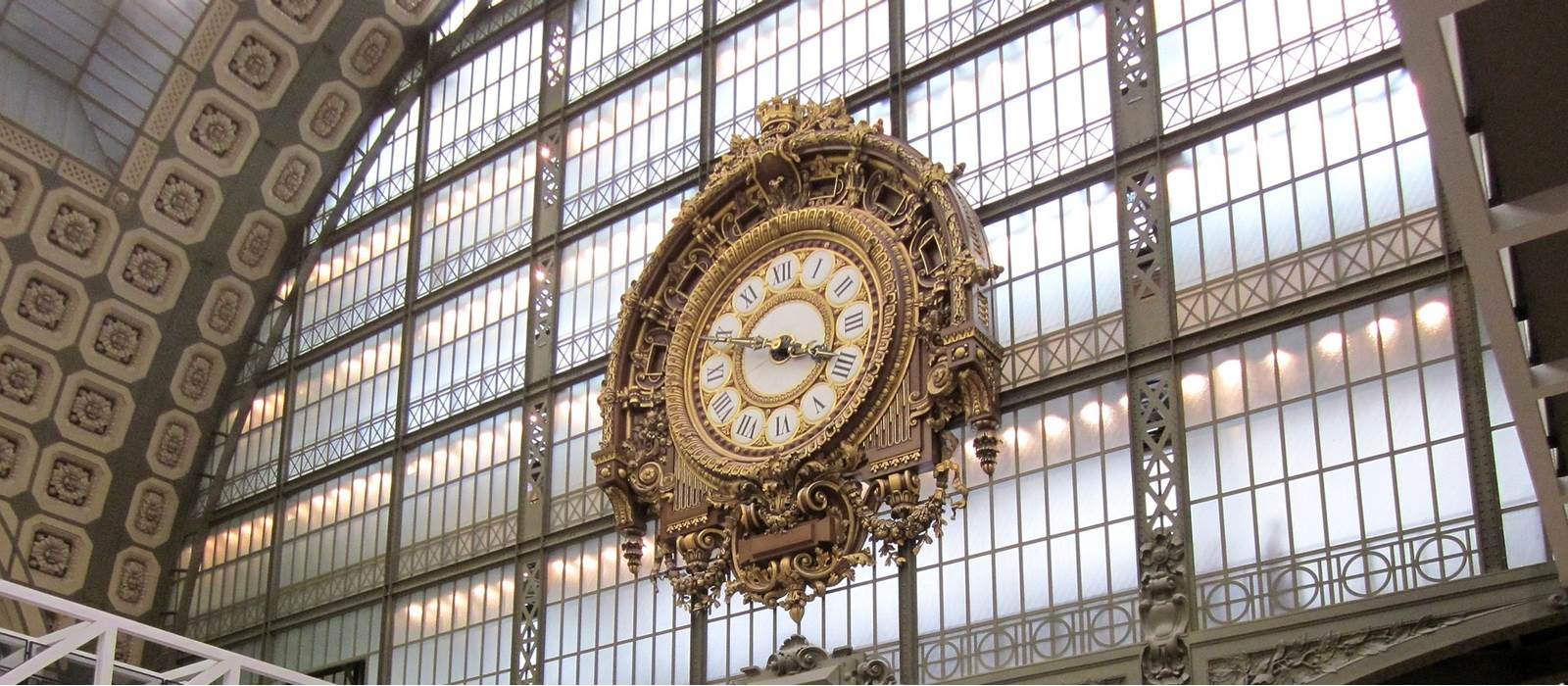
Days of Discovery at Musée d’Orsay in Paris
Meet the Impressionist & Postimpressionist Masters
Proudly positioned on Paris’ cultivated Left Bank, Musée d’Orsay from the outside casts an imposing figure, with its grandiose turn-of-the-century exterior. Though its priceless contents are the reason for it being one of the most visited museums in the world. And rightly so! Not only is the institution home to sundry seminal works from the prosperous period of art history between 1848 and 1914; but also to the most significant collection of Impressionist and Postimpressionist paintings in the world.
The Rise (and Nearly Fall) of the Historic Building
Today, Musée d’Orsay resides as one of the most admired art institutions in Paris; although the building’s history wasn’t always as colourful as the canvases which are now housed within its walls.
Construction of the building began in 1898, when Victor Laloux was tasked with designing a railway station befitting of its opulent neighbours. The result was the grand Gare d’Orsay. Though, within just forty years, the rapidly advancing rate of the railways had surpassed that of the building, leaving Laloux’s enterprise surplus to requirements.
Uncertainty about the future of La Gare d’Orsay followed, with plans emerging to turn the prime piece of real estate into an ultramodern hotel. Luckily, Laloux’s intricate architecture - featuring the iconic arched glass roof and rows of ornate windows - was deemed too historically significant to be demolished. Instead, the abundance of natural light and the beautiful Belle Époque interiors were thought to provide a perfect home for a contemporary exhibition space. Thus, Musée d’Orsay was born.
The Iconic Collections of Musée d’Orsay
Set across three floors, a day of discovery at Musée d’Orsay will acquaint you with a veritable treasure trove of art, largely spanning the prosperous period between where the Louvre’s collection ends (1848) and the Pompidou’s begins (1914).
There are many ways in which you can discover the abounding artworks of the museum, but the most fulfilling is to commence on a chronological journey, which begins on the ground floor. Here, you can familiarise yourself with the predecessors of Impressionism - embodied in the Neoclassical canvases by Ingres, paintings by his Romantic rival Delacroix, and the series of revered Realist oils by Courbet.
While here, don’t miss some of the early portraits by Edgar Degas. Although he coined himself as a Realist, the French artist is widely regarded as one of the founders of Impressionism, embodied in his relentless depictions of dance which are displayed on the fifth floor. However, works from his youth are particularly suggestive of his desire to become a history painter: with canvases like his formative The Bellelli Family (1858-1867) a perfect personification of his rigorous academic training and studies of classical art.
The Home of the Impressionists
Peculiarly, to continue your exploration in a sequential manner, you must then head straight to the buildings fifth floor, where the crowning jewel of Musée d’Orsay awaits. This is the home of the Impressionists; where you can admire Pissarro’s alluring landscapes; Cezanne’s iconic Card Players; Manet’s shocking Olympia and his seminal Luncheon on the Grass. Monet’s own interpretation of Luncheon on the Grass too resides on the fifth floor, though his masterful imaginings of London and selections from his series of Water Lilies are undoubtedly his most celebrated canvases on display.
Another innovative Impressionist to be found on the fifth floor is Auguste Renoir. While he too created colourful landscapes, the French artist is perhaps better known for his delicate celebrations of beauty and his portrayals of feminine sensuality - as showcased in The Swing. Another interesting canvas of Renoir’s is his portrait of Claude Monet from 1875, where his friend is presented in a personal light, while adopting the natural light concentrated on his subject’s face. Arguably his finest work, Bal du Moulin de la Galette is another oil worth devoting your time to, with its rich form, fluid brushstrokes, and masterful manipulations of light.
Meet the Pioneers of Postimpressionism
Once you manage to drag yourself away from the Impressionists, journey towards the second floor and meet the artists who would reject the ideals of their forefathers - though Cézanne is notably absent, with a majority of his work instead displayed on the fifth floor.
Even so, those who were greatly inspired by the vivid canvases of Cézanne are very much established on the second. Among them are affiliates of Les Nabis like Bonnard and Vuillard. But Gauguin is unquestionably the best known artist from this rebellious band. In particular, his toils from travels to Tahiti are worth a healthy proportion of your time; although his Les Alyscamps is of particular interest, given it was painted in unison with a canvas of the same name by Vincent van Gogh. Unfortunately, van Gogh’s version of the same scene belongs to a private collection; but his Starry Night Over the Rhône, The Church at Auvers, and Self Portrait from 1889 are a more than ample reimbursement.
Round off your cultural day of discovery by acquainting yourself with the works of Georges Seurat and his scientific approach to art. Adopting techniques of Divisionism and Pointillism, Seurat’s building of colour via small dots and subtle strokes of shade revolutionised avant-garde art during the latter stages of the nineteenth-century. Arguably Seurat’s most memorable work housed within Musée d’Orsay is Le Cirque - his third major circus canvas, which would remain unfinished due to his untimely death in 1891.


